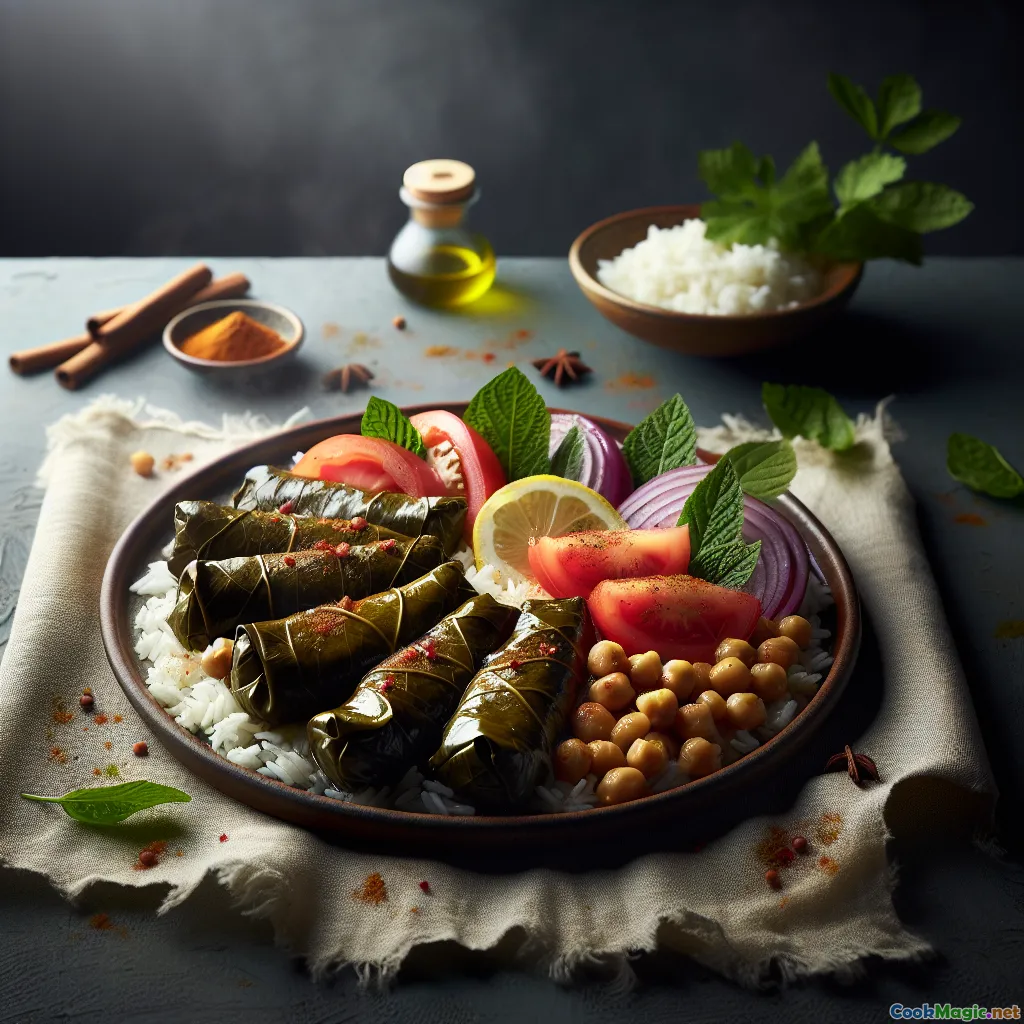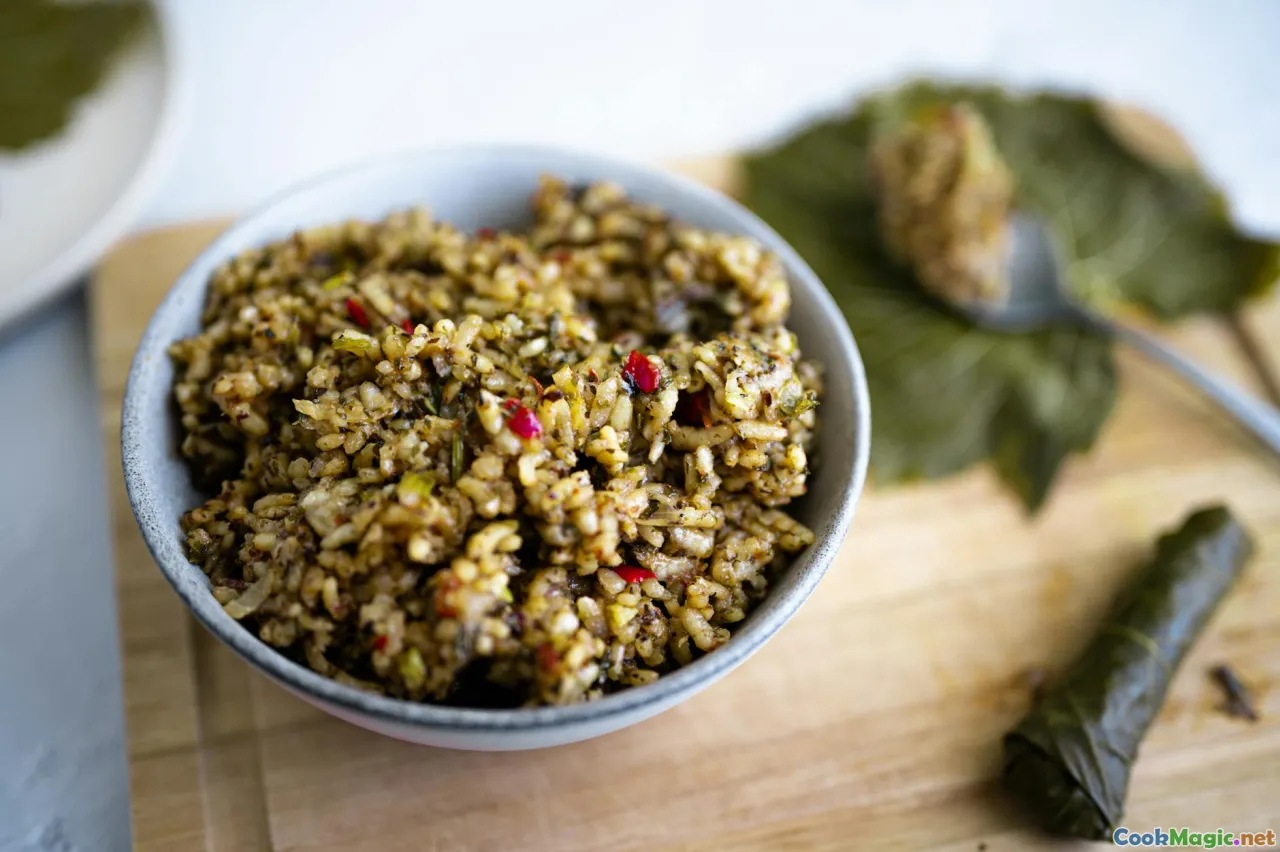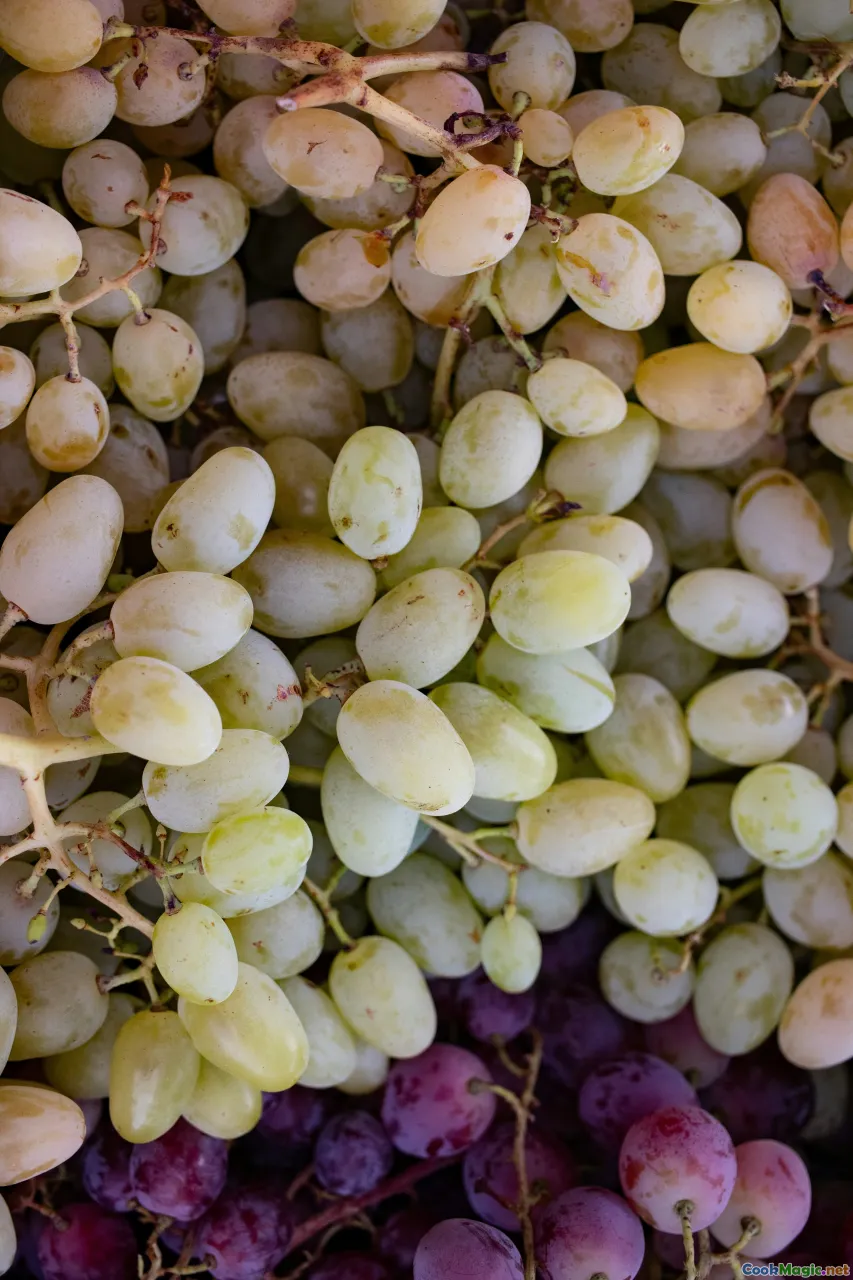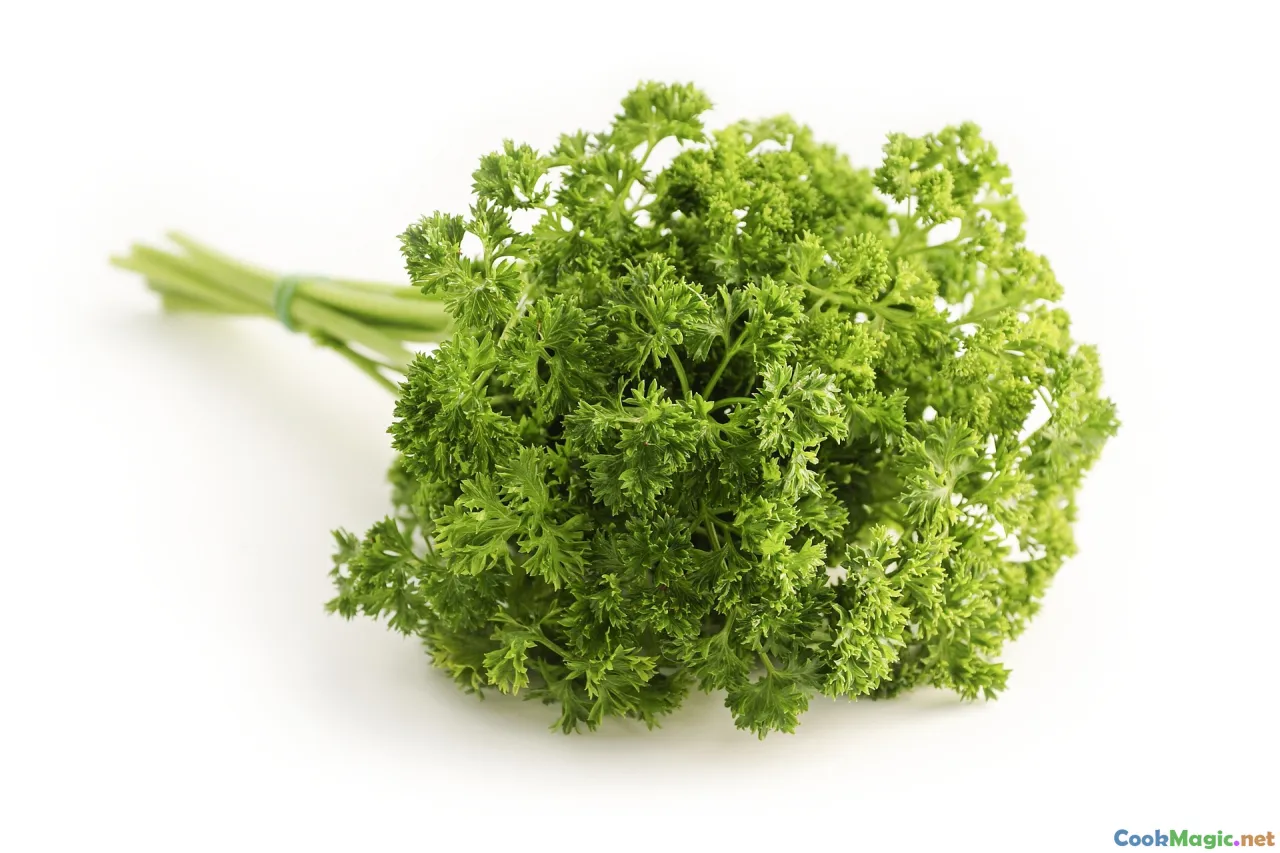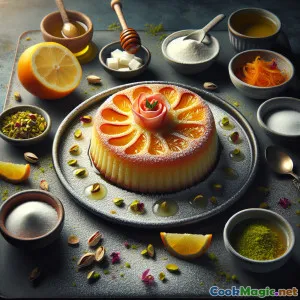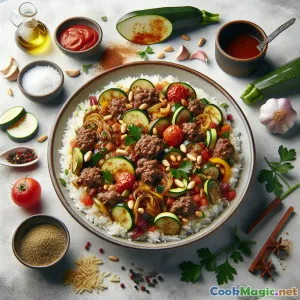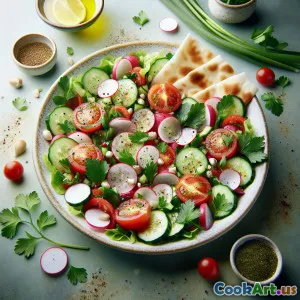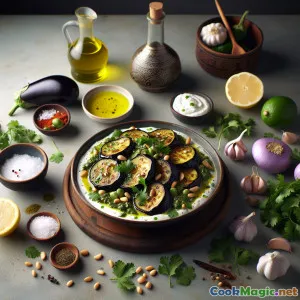
Pesta Daun Anggur Isi dengan Rempah-rempah Tujuh
(Seven-Spiced Stuffed Grape Leaves Feast)
(0 Ulasan)0
153
Agustus 27, 2025
Laporkan Masalah
Bahan
-
32 pieces Daun anggur
(about one 300g jar packed in brine or fresh blanched leaves)
-
1 cup Nasi Basmati
(uncooked, rinsed until clear)
-
1/2 cup Kacang Arab
(cooked and roughly mashed)
-
1 medium Tomat
(Dicincang halus)
-
1/2 small Bawang merah
(Dihaluskan halus)
-
1/2 cup Daun peterseli datar
(Dihaluskan halus)
-
1/4 cup Daun mint segar
(Dihaluskan halus)
-
1 1/2 teaspoons Campuran rempah tujuh jenis
(Lebanese or Middle Eastern blend)
-
1/4 teaspoon Kayu manis bubuk
(optional extra warmth)
-
3 tablespoons Minyak zaitun
-
3 tablespoons Jus lemon
(freshly squeezed, more for serving)
-
1 1/2 teaspoons Garam
(Sesuaikan dengan selera)
-
1/2 teaspoon Lada hitam
-
1 1/2 cups Kaldu air atau sayuran
(Memasak dengan api kecil)
-
2 cloves Bawang Putih
(Dihancurkan)
(about one 300g jar packed in brine or fresh blanched leaves)
(uncooked, rinsed until clear)
(cooked and roughly mashed)
(Dicincang halus)
(Dihaluskan halus)
(Dihaluskan halus)
(Dihaluskan halus)
(Lebanese or Middle Eastern blend)
(optional extra warmth)
(freshly squeezed, more for serving)
(Sesuaikan dengan selera)
(Memasak dengan api kecil)
(Dihancurkan)
Nutrisi
- Porsi: 4
- Ukuran Porsi: 5 stuffed leaves (approx. 220g)
- Calories: 430 kcal
- Carbohydrates: 67 g
- Protein: 9 g
- Fat: 14 g
- Fiber: 7 g
- Sugar: 3 g
- Sodium: 800 mg
- Cholesterol: 0 mg
- Calcium: 130 mg
- Iron: 3.2 mg
Instruksi
-
1 - Prepare Grape Leaves:
Drain grape leaves and rinse well to remove brine. If using fresh, blanch in boiling water until just softened, about 1-2 minutes. Set aside on a towel to dry and cool.
-
2 - Soak Rice & Prep Filling Ingredients:
Rinse rice until water runs clear, then soak for 15 minutes while chopping the tomato, onion, parsley, and mint. Mash chickpeas if using.
-
3 - Mix Filling:
In a bowl, combine the drained rice, tomato, red onion, parsley, mint, mashed chickpeas, seven spice, cinnamon (if using), 1 tbsp olive oil, lemon juice, salt, and pepper. Mix thoroughly.
-
4 - Stuff and Roll Grape Leaves:
Lay a grape leaf stem-up on the smooth side. Place about a tablespoon of filling at the base, fold sides over filling, then roll up snugly from stem to tip. Repeat until all filling is used.
-
5 - Arrange for Cooking:
Layer any torn or extra leaves at bottom of a pot. Arrange rolls in snug layers seam-side down, packing tightly but not squashing.
-
6 - Simmer Rolls:
Drizzle remaining olive oil over rolls. Lay a heatproof plate over them to weigh down. Add water/broth, garlic, and extra lemon juice. Simmer covered on low for 40-45 min until rice is cooked and liquid absorbed.
-
7 - Rest and Serve:
Let the grape leaves cool in the pot for 10 min. Carefully lift out and serve warm or at room temp, with extra lemon wedges.
Drain grape leaves and rinse well to remove brine. If using fresh, blanch in boiling water until just softened, about 1-2 minutes. Set aside on a towel to dry and cool.
Rinse rice until water runs clear, then soak for 15 minutes while chopping the tomato, onion, parsley, and mint. Mash chickpeas if using.
In a bowl, combine the drained rice, tomato, red onion, parsley, mint, mashed chickpeas, seven spice, cinnamon (if using), 1 tbsp olive oil, lemon juice, salt, and pepper. Mix thoroughly.
Lay a grape leaf stem-up on the smooth side. Place about a tablespoon of filling at the base, fold sides over filling, then roll up snugly from stem to tip. Repeat until all filling is used.
Layer any torn or extra leaves at bottom of a pot. Arrange rolls in snug layers seam-side down, packing tightly but not squashing.
Drizzle remaining olive oil over rolls. Lay a heatproof plate over them to weigh down. Add water/broth, garlic, and extra lemon juice. Simmer covered on low for 40-45 min until rice is cooked and liquid absorbed.
Let the grape leaves cool in the pot for 10 min. Carefully lift out and serve warm or at room temp, with extra lemon wedges.
Informasi Lebih Lanjut: Pesta Daun Anggur Isi dengan Rempah-rempah Tujuh
Stuffed Grape Leaves with Seven Spices — Tradition With a Twist
Stuffed grape leaves, or warak enab, stand as one of the pillars of Middle Eastern vegetarian cuisine. They evoke stories from sunlit Mediterranean kitchens, festive gatherings, and hands stained green from the art of rolling each leaf with practiced care. My Seven-Spiced Stuffed Grape Leaves celebrate this beloved tradition—with a nod to both authenticity and creative prosperity.
Culinary Origin & History
While found throughout Greece (dolmades), Turkey, and Middle Eastern cuisine, the Lebanese version showcases aromatic herbs and, notably, 'seven spice'—a regional spice medley blending allspice, cinnamon, black pepper, coriander, cumin, nutmeg, and cloves. These spice blends vary by house or region but their function remains the same: granting a warming undertone and bright complexity, transforming simple rice and herbs into something altogether memorable.
As a dish, stuffed grape leaves date back millennia, treasured both for their ability to nurture and for their sheer adaptability. Fasts and feasts alike see trays of tightly packed rolls on offer—with each roll a minor miracle: delicate, savory, citrus-bright, and rich in earthy aromas.
Unique Aspects Here
This rendition doesn't just hide its flavor in the seven spice: by working mashed chickpeas into the rice, we're lifting the protein and introducing a tender, creamy note. You may use water or, for more body, a good homemade vegetable stock to simmer. Parsley and fresh mint can be increased or swapped with dill if you like—they become true agents of spring.
The steps require care. Don't rush—the experience is the embodiment of kitchen mindfulness. Rolling takes a practiced touch but doesn’t seek perfection; rustic rolls have their own homey charm.
Serve your stuffed grape leaves warm or room temperature—and don’t skip the resting stage, which melds all the heady aromas and ensures that each bite is soft, cohesive, and bursting with juice.
Tips & Notes
- Always rinse the grape leaves well; saltiness can overwhelm otherwise.
- For heartier bites or served as mains, hollowed zucchini or tiny bell peppers may be filled and cooked alongside.
- Lemon is key. A squeeze just before serving lifts every other flavor present, cutting through oil and rich spices alike.
Cultural Significance
Stuffed grape leaves transcend boundaries. They form a part of mezze—a shared experience, a plate designed for picking, for holiday tables, or as comfort food after a long journey. It is businesses transformed into artisans standing over trays, frantically rolling or neatly tucking small parcels for enormous family tables. There’s ritual too: recipes often handed from mother to daughter, changing imperceptibly through generations but never quite losing their soul.
On the table, these leaves are as often wrapped around lamb as they are around lentils; as beloved by vegetarians as meat eaters. This adaptability makes them a shining centerpiece of regional hospitality and ingenuity.
Final Thoughts
Making Stuffed Grape Leaves with Seven Spices at home bridges kitchen labors of love between continents. This is not fast food—indeed, its preparation invites friends or family to join in; and the joy in rolling, layering, and anticipating that first hit of tangy spice is only surpassed by sharing the finished tray. Make plenty—it’s as common to eat them cold the next day (sometimes straight from the fridge) as it is to savor them steaming, as part of a sun-dappled feast.
What lingers most, beyond the complex flavor, is the act of making. Spend the afternoon rolling and layering, knowing each leaf carries both the memory and anticipation of many kitchens, many tables, and one timeless, aromatic creation.
